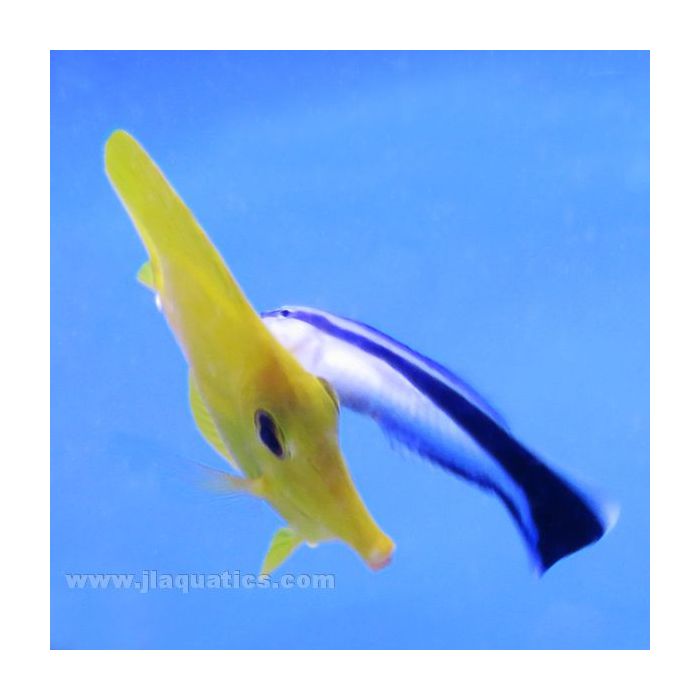Cleaner Wrasse (Asia Pacific)
Wrasses are prone to jumping from the aquarium when startled or excited so we recommend a secure lid. They feel most secure when there is plenty of live rock to hide in, as well as open space for swimming. Most species may be kept in pairs or harems as long as they are added together or females first. They do not appreciate living with other species of wrasse, so any aquarium with several species must be large enough and the most peaceful species added first.
They should be fed two to three times a day plenty of high quality meaty items, frozen Mysis shrimp, krill, chopped seafood, marine algae and Spirulina.
Cleaner wrasses are naturally bold and spend their days swimming in the open, often with a unique up and down dance used to attract the attention of client fish. Their natural foods are parasites such as amphipods as well as dead skin and scales from larger fish. Smaller parasites such as ICH may be ignored in favor of searching for a more substantial meal. They instinctively want to clean other fish from dawn until dusk, so they are only recommended for large aquariums with plenty of tank mates. Otherwise they may pester their tank mates so much the other fish may chase and bite them. They have no fear of huge fish, so caution should be used if adding them with fish such as groupers which may swallow them whole.
It is difficult to meet their unique nutritional needs, and as such they often fair poorly in aquariums. If they will accept prepared items they should frequently be offered a wide variety of foods thorough the day. Cleaner wrasses are totally reef safe, except with Tridacnid clams. The spots on the clam's mantel may be mistaken for parasites and nipped on by the wrasse. Cleaner wrasses are friendly with every other type of fish, but are extremely territorial with each other and may fight violently. At night time or when frightened they will hide amongst the rocks.
The Cleaner wrasse has a striking combination of color and contrast. Its front half is the color of brushed silver and its rear half an electric blue. A bold black stripe begins at its nose and extends all the way to the end of its flared tail fin. Males and females are identical. It grows up to 5 inches and needs an aquarium of at least 100 gallons.
















